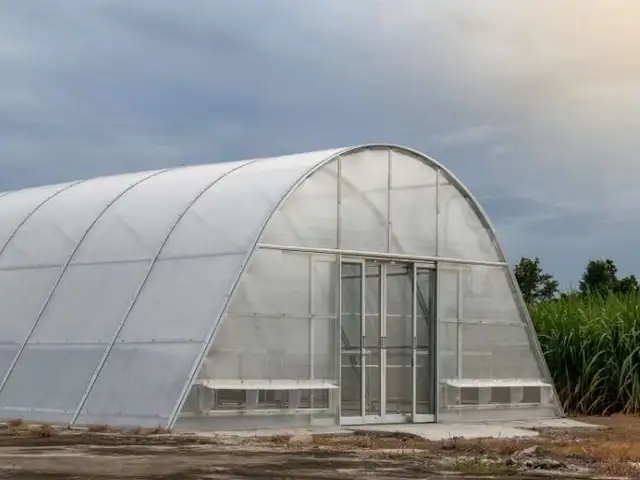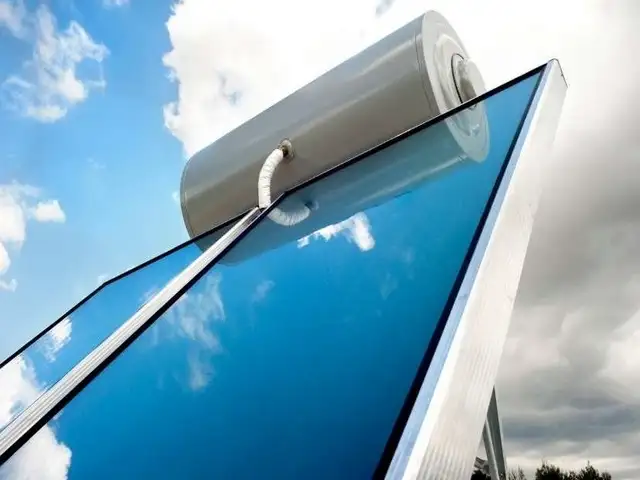Greenhouse Heater Solar Systems use solar power to heat your greenhouse.
Solar panels gather the sun’s energy and transform it into electricity, which is then used to power a heating system that keeps plants at the desired temperature. There are two types of solar panel warming systems: active and passive.
Dynamic systems include active devices such as pumps, fans, and other items that generally don’t require any additional help providing constant warmth in the greenhouse. Passive systems do not contain any of these active devices.
A common passive system is called a ‘solar chimney’ or ‘passive stack’. This type of system uses convection currents to circulate warm summer air from the bottom level upwards through vents at the top. The main benefit of this system is that it does not require any outside energy source, its only downside being that it can be less efficient than other types of
How does the greenhouse heater work?
A greenhouse heater is a device that helps maintain the temperature of your greenhouse. It produces heat and prevents the greenhouse from getting too chilly.
Greenhouses are often used in order to grow vegetables and other crops. The plants need some form of heat to grow healthy. Greenhouse heaters are one way that can provide warmth for greenhouses
The greenhouse heater device provides warmth to a greenhouse, preventing it from freezing. In the process it can keep the temperature constant, heating up in the winter and cooling down in the summertime.
Most greenhouses use heaters to keep the temperature and plants warm. Solar heat is one way however, cheaper electric or gas heaters are also a common solution.

What are the benefits of using a greenhouse heater solar?
The benefits of using a greenhouse heater include:
– Heating the greenhouse with green methods will, not only save you money but also reduce your carbon footprint.
– It saves on the cost of electricity.
– It reduces the need for fossil fuels.
– It is more efficient than other forms of heating.
– It helps to reduce the risk of frost damage to plants.
– There are no fumes or smoke from this form of heating, unlike other types such as gas heaters or oil heaters.
How do I choose the right solar panel size for a greenhouse heater?
When designing a greenhouse heat-recovery system, one of the first things engineers need to consider is the size of their solar panel. Without the proper size, you may not receive the optimal yield from your solar-thermal system.
The size of the solar panel should be proportional to the size of the greenhouse and its geographical location.
Here are 5 tips to help you choose the right size for your greenhouse heater:
- The efficiency of solar panels depends on their surface area. A larger surface area will produce more energy, so it’s better to choose a larger panel than a smaller one if you have space available.
- The climate where your greenhouse is located will determine whether or not you need an additional heating system for your greenhouse, like an electric heater or propane boiler system. If your climate is cold, you should use an electric heater or propane boiler.
- If you are heating your greenhouse, the choice of heating system will depend on what type of greenhouse you want to heat and how much space it has.
Small greenhouses only need a propane burner boiler, but for large ones, electrical heaters or gas burners will be necessary.
- To reduce your electricity consumption, try using solar power with a solar panel to heat your greenhouse
- The electricity generated by the solar panels on your greenhouse can also power the lights or irrigation system.
What are some of the disadvantages of a greenhouse heater?
Learn how a greenhouse heater can keep you warm during the cold winter months. Not only are they less expensive in the short term than heating your whole house, but installing one is a great way to ensure that enough sunlight is reaching your plants inside.
It’s worth noting that some people do perceive negative aspects about AI writers. For example, critics have pointed to the fact that such writers can’t interact on a personal level with their clients, and may not always include cultural research.
1) Greenhouse heaters are not as efficient as other heating systems. They have an operating temperature of around 70 degrees Fahrenheit, which is too low for many plants that need warmer temperatures to thrive.
2) Greenhouses require ventilation for air circulation and proper humidity levels, so the heater will only work when it is turned off, and you open the vents or windows.
3) Installing solar panels on your roof takes up valuable space that could be used for solar water heating systems or a different rooftop solar system.
4) Solar water heaters are expensive. They have a high initial cost and the payback time is 12 years, making it difficult for some people to get over the initial hurdle.
The initial investment cost is also high. In addition, solar water heating systems are not energy efficient because they rely on the sun’s hours of sunlight to work efficiently. However, the problems associated with solar water heating systems are diminishing as advances in solar engineering have contributed to cheaper and more efficient systems.
5) There is no supplemental energy source for cloudy days or when the sun is not shining. The most significant problem facing solar water heating systems is no supplemental energy source for cloudy days or times when the sun is not shining.
What are the options for greenhouse heating?
There are three main options for greenhouse heating:
- The most popular option for heating a greenhouse is a gas heater. They are affordable and common, the downside is that they release carbon dioxide into the environment
- There are two options for heating in cold climates, a wood stove or pellet stove. Both work well there.
- Other heating methods work best in colder climates, but a heat pump could help make your home more comfortable in more temperate weather.
How do I install a greenhouse heater solar system?
Installing a greenhouse heater solar system is not an easy task. You will need to follow some steps to install it.
- First, you will need to choose the right location for the system. The location should be close enough to the greenhouses but not too close that it will interfere with their ventilation. The best location for the system is at least 3 meters away from the greenhouses and at least 1 meter away from any other buildings or structures that might block sunlight from reaching it.
- Next, you will need to determine if your greenhouse has a metal roof or not and then install a grounding rod in that case if it does not have one already installed, as this is necessary for grounding purposes to protect against lightning strikes and power surges which can damage your system components.
- After installing the grounding rods, you will need to turn on your barn door opening switch and close the door for approximately five minutes to clear any static buildup before starting up your system.
- Next, determine what type of greenhouse you have and follow the corresponding instructions for installing a plugin transformer or an inverter that will run a multi-plug extension cord. I have no plugin transformer, but I have an inverter that will run one multi-plug extension cord. 5. Remove any exposed wires from the back of the inverter or plugin transformer unit and connect the wires to your new appliance: an air conditioner, dehumidifier, power strip, refrigerator, or fan.
- Ensure that the appliance is unplugged and turned off before connecting the wires to your new appliance. 7. Plug in the new appliance and turn it on to make sure it works properly by pushing any of its buttons or turning its switch on and off a few times (if possible). 8. Please turn off the new appliance and unplug it from the wall outlet.
What is the cost of a solar greenhouse heater solar?
The cost of a solar greenhouse heater all depends on your greenhouse size and the features, design, and brand you have chosen.
It can cost anywhere from $1,000 to $25,000 or more to purchase a solar greenhouse heater. More expensive ones will be pricier due to their size and features. However, a basic one that is less expensive would still have enough features.
I need to install a separate heating and cooling system in my greenhouse before installing a greenhouse heater solar system?
You can use a greenhouse heater solar system to achieve both heating and cooling in your green house.
A greenhouse heater solar system works by transferring the sun’s heat through the panels and into your greenhouse. Heat is then distributed evenly by the fans inside.
A greenhouse heater solar system will work in any climate as long as enough sunlight is available for it to use.
How much electricity will I need to produce my power with a greenhouse heater solar system?
Greenhouses provide a natural environment for plants to grow in. Solar heaters can be used to keep the greenhouse nice and warm. Water pipes running through the inside of the greenhouse are heated by the solar heater on top, which maintains an optimal temperature.
This article will give you some tips on how much power you’ll need to produce with a solar greenhouse system. This article helps you understand the heat that’s transferred in this environment.
Can I produce enough power during the winter to supply all my winter needs with power production?
If you are a homeowner, the answer is yes. If you live in an apartment or a condominium, the answer is no.
This is because homeowners can install solar panels on their roofs to produce power and have enough to supply all their needs during the winter. However, live in an apartment or condominium. You will not be able to install solar panels because it is illegal for property owners to install them on other people’s rooftops without permission.














